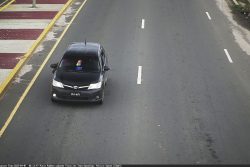Two months after they had been left to fend for themselves, seven children between the ages of 15 months and 14 years were taken into the custody of the Linden branch on the Ministry of Human Services and Social Security’s Child Care and Protection Unit. A day later, investigations revealed that the children had been left with an older sibling – a 17-year-old – who disappeared shortly after and has not been seen since. A ninth child – a 16-year-old boy – who had dropped out of school and gained employment had been helping to provide some food for them, but the children were still forced to beg.
In addition, none of the school-age children had gone to school since the new school year began just over a week ago. And there was nothing in the tiny, unprotected shack where they were existing, which even suggested to the child care officer who rescued them that they would have started school any time soon.
As it turned out, the three youngest children have a grandmother who lives close by; neighbours had also looked out for them from time to time. When interviewed, the grandmother said her illness prevented her from taking care of the children and that she had been out of touch with them because of differences with their mother. She expressed sorrow at the fact that the children had been taken into the state’s care. Neighbours also, though aware of the children’s plight and unable to assist them, said they were sad that the children were now under the state’s protection and expressed the hope that they would not be sent to an orphanage.
It is obvious that the sorrow and fears expressed by the children’s grandmother and their neighbours stem from ignorance about the state’s role. Clearly, there is need for more awareness and sensitization about the Child Care and Protection Unit. What is also painfully evident is the absolute lack of awareness of the needs and rights of those hapless children. It is mind-boggling that nine children and two adults were forced to live in the tiny, windowless and doorless shack that this newspaper’s reporter was shown when she visited Siberia, a day after the children were removed. (It is clear that Siberia in Region Ten is a depressed community, but whoever gave it that name – apparently for the vast and distant Russian region where criminals and political opponents were banished – must have had a black sense of humour.)
However, given the conditions under which the rescued children were found, it’s not hard to understand why the 17-year-old fled or why the 14-year-old, who had then assumed responsibility for her younger siblings, broke down in tears when Child Care Officer Amril Beckles showed up. Neither girl should have been thus burdened; care of children is ultimately their parents’ responsibility. It was wrong for the children’s mother to go off and leave them alone, but this story can still have a happy ending.
For one thing, these children have now been absolved of the responsibility of wondering where their next meal will come from. They will be clothed. They are no longer cramped in a dilapidated shack and exposed to the elements, and possibly predators. The ones who are of school age will be enrolled in schools. This is what the Child Care and Protection Unit does; we have seen this in other cases of child abandonment.
Meanwhile, efforts will be made to find the children’s parents. Some observers feel they should be arrested and charged, but it is pellucid that what these parents need – more than punishment – is counselling and to be taught parenting skills. They will also need assistance so that along with sustenance, they can ensure that their children’s other needs are met and their rights respected.
What is sad is that apart from the welfare assistance which the father received as an amputee, it appears that there was no other provision for this family that was drowning in the quicksand of poverty and ignorance. This family should have been on the welfare agency’s radar. An observant teacher or caring neighbour should have mentioned these children to welfare officers/social workers, and perhaps if she had had some help their mother would not have left. The need for networking among schools, communities and the state welfare machinery is once again obvious; pro-activity is what will help stamp out child neglect.







